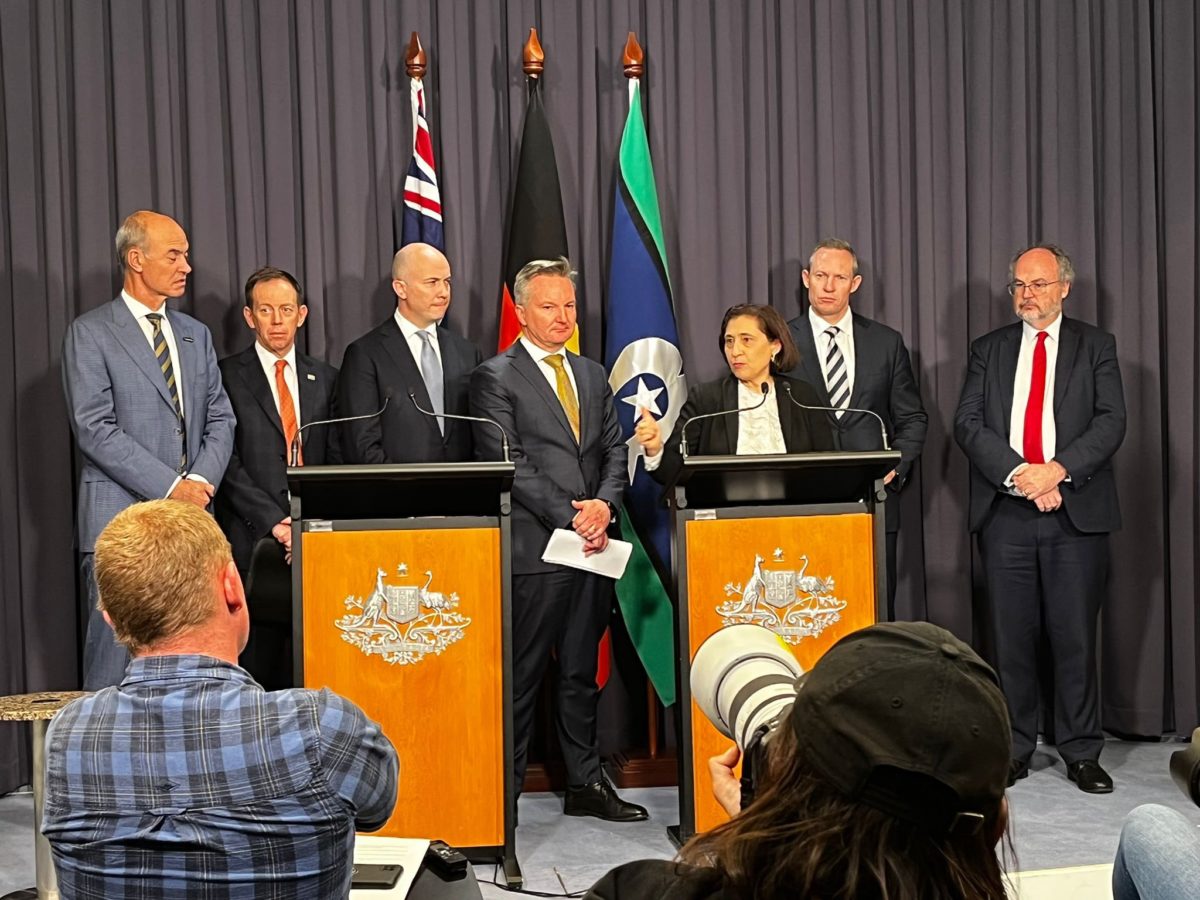Australia’s state, territory and federal energy ministers have as part of a new National Energy Transformation Partnership agreed to reform national energy policy to help fast track the transition of the electricity grid from fossil fuels towards 100% renewables.
At a meeting in Canberra on Friday the nation’s energy ministers agreed to enshrine “emissions reduction” as a new objective in the national electricity objective (NEO). Currently, the objective sets “price, quality, safety and reliability and security of supply of electricity” as the goals.
Speaking after the meeting, Federal Energy Minister Chris Bowen said the change will ensure decisions made under the National Electricity Law, National Gas Law and National Energy Retail Law will consider emissions alongside other objectives.
“This might not sound much, but this is the first change to the national energy objective in 15 years,” he said.
“This is important. It sends a very clear directive to our energy market operators that they must include emissions reductions in the work that they do, the objectives they have, or any advice or decisions they make.”
Bowen said the move would provide greater certainty to drive large-scale clean energy investments that would be vital to achieving emissions reduction targets.
“The message of certainty to investors in renewable energy and transmission and storage around the world that Australia is open for business,” he said. “Australia is determined to reduce emissions, and we welcome investment to achieve it and we will provide a stable and certain policy framework.”
Former Clean Energy Finance Corporation (CEFC) director Andrew Stock, now with the Climate Council advocacy group, applauded the decision, saying it would “pave the way for low-cost, low-emissions energy sources, renewable energy like wind and solar, to play a greater role in Australia’s energy system”.
“For too long, the NEO has allowed industry and regulators to ignore the impacts of electricity sector greenhouse gas emissions,” he said. “Now, all states and territories must ensure this legislation gets passed.”
The energy ministers also agreed to co-operate on the building program for ‘nationally significant’ transmission projects to connect more renewable capacity to major markets. The ministers have already identified three projects as qualifying for the designation: the Marinus Link between Tasmania and Victoria; the VNI West Victoria-to-NSW interconnector; and Hume Link, which will bring Snowy Hydro 2.0 into the national electricity market.
The ministers also discussed a future capacity mechanism to ensure firming power in the grid during the transition away from coal with federal and jurisdictional officials directed to provide options for a framework which delivers “adequate capacity, ensures orderly transition, and incentivises new investment in firm renewable energy”.
“Ministers intend to take a more active role in delivering the firming capacity needed as the system transforms and consider the best means to manage the risks of a disorderly exit of coal generation,” the joint communique said.
The ministers also agreed to a package of gas market reforms including extending the Australian Energy Market Operator’s (AEMO) powers and functions to enable it to better forecast and manage east coast supply shortfall risks in winter 2023 and beyond.
This content is protected by copyright and may not be reused. If you want to cooperate with us and would like to reuse some of our content, please contact: editors@pv-magazine.com.









1 comment
By submitting this form you agree to pv magazine using your data for the purposes of publishing your comment.
Your personal data will only be disclosed or otherwise transmitted to third parties for the purposes of spam filtering or if this is necessary for technical maintenance of the website. Any other transfer to third parties will not take place unless this is justified on the basis of applicable data protection regulations or if pv magazine is legally obliged to do so.
You may revoke this consent at any time with effect for the future, in which case your personal data will be deleted immediately. Otherwise, your data will be deleted if pv magazine has processed your request or the purpose of data storage is fulfilled.
Further information on data privacy can be found in our Data Protection Policy.